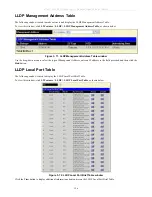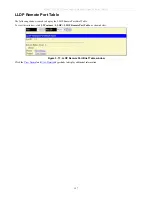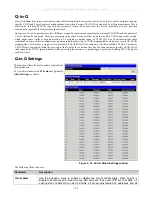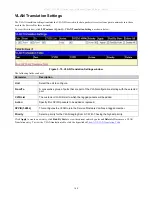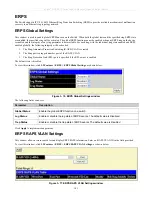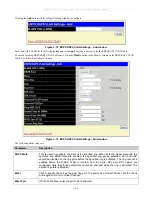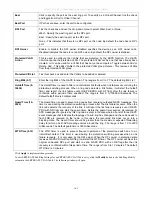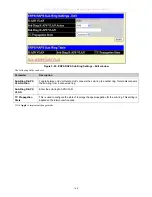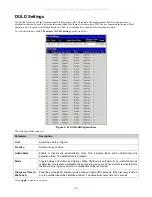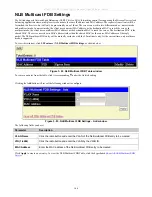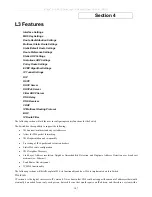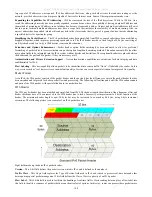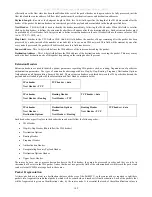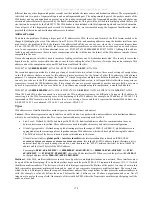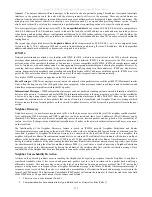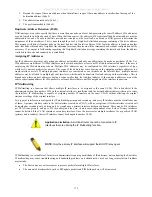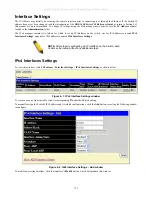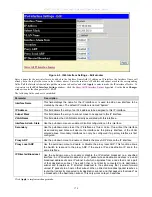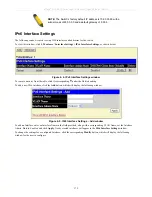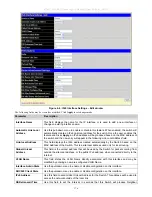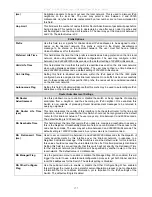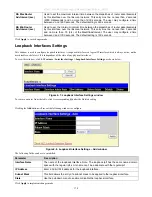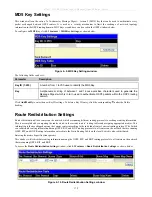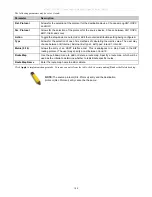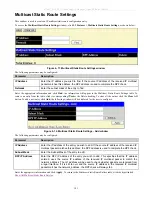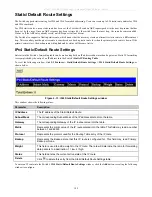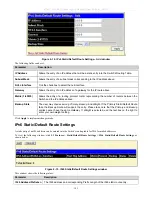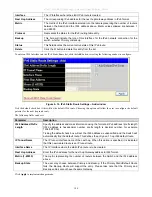
xStack
®
DGS-3600 Series Layer 3 Managed Gigabit Ethernet Switch
efficiently once the flow class has been identified and the rest of the packet header no longer needs to be fully processed, just the
flow label and the source address. All flow label packets must have identical source and destination addresses.
Payload Length
– Known as the datagram length in IPv4, this 16-bit field specifies the length of the IPv6 data carried after the
header of the packet. Extension headers are considered part of the payload and are included in the length specified here.
Next Header
– This 8-bit field is used to identify the header immediately following the IPv6 header. When this field is set after
the hop by-hop header, it defines the extension header that will appear after the destination address. Each extension header must
be preceded by a Next Header field. Integers used to define extension headers in the next Header field use the same values as IPv4
(ex: 6=TCP, 17=UDP, etc.).
Hop Limit
- Similar to the TTL field in IPv4, this 8-bit field defines the number of hops remaining after the packet has been
processed by a node, instead of the number of seconds left to live as on an IPv4 network. This field will decrement by one after
every node it passes and the packet will be discarded once this field reaches zero.
Source Address
– This 16-byte field defines the IPv6 address of the source node sending the packet.
Destination Address
– This 16-byte field defines the IPv6 address of the destination node receiving the packet. This may or may
not be the final destination node of this packet, depending on the routing header, if present.
Extension Headers
Extension headers are used to identify optional parameters regarding IPv6 packets such as routing, fragmentation of packets or
authentication parameters. The types of extension headers supported are Hop-by-Hop, Routing, Fragment, Destination Options,
Authentication and Encapsulating Security Payload. These extension headers are placed between the IPv6 packet header and the
payload and are linked together by the aforementioned Next Header, as shown below:
IPv6 header
Next Header = TCP
TCP data
IPv6 header
Next Header = Routing
Routing Header
Next Header = TCP
TCP data
IPv6 header
Next Header =
Destination Options
Destination Options
Header
Next Header = Routing
Routing Header
Next Header = TCP
TCP data
Each header has a specific place in the header chain and must follow the following order:
•
IPv6 Header
•
Hop-By-Hop Header (Must follow the IPv6 header)
•
Destination Options
•
Routing Header
•
Fragment Header
•
Authentication Header
•
Encapsulating Security Payload Header
•
Destination Options Header
•
Upper Layer Header
There may be zero, one or more extension headers in the IPv6 header, they must be processed in order and they are to be in
increments of 8 octets in the IPv6 packet. Nodes that do not recognize the field of the extension header will discard the packet and
send a relevant ICMPv6 message back to the source.
Packet Fragmentation
At times, packets are sent out to a destination that exceed the size of the Path MTU, so the source node is required to split these
packets into fragments in individual packets which will be rebuilt when it reaches its final destination. Each of the packets that
will be fragmented is given an Identification value, by the source node. It is essential that each of these Identification values is
169


